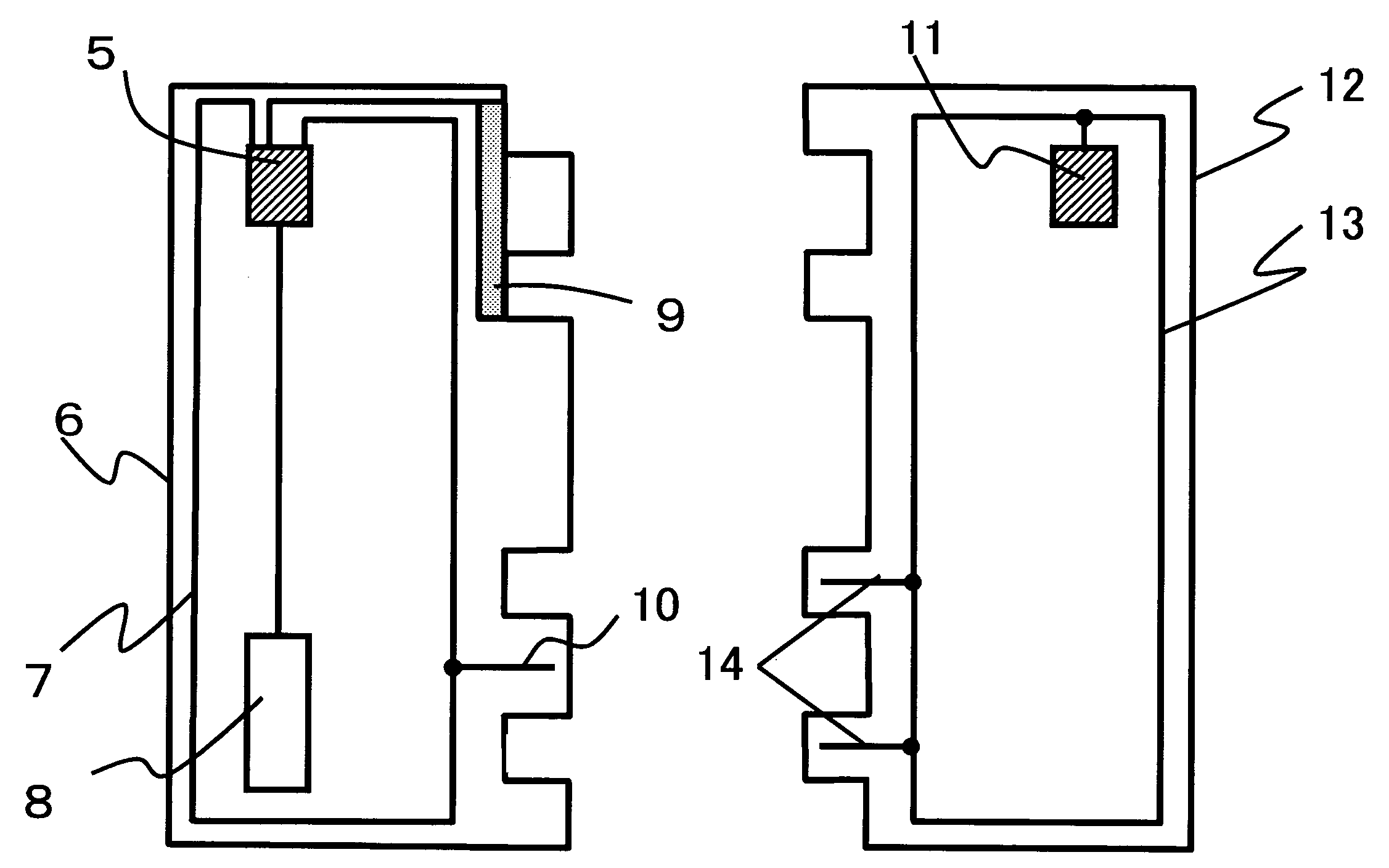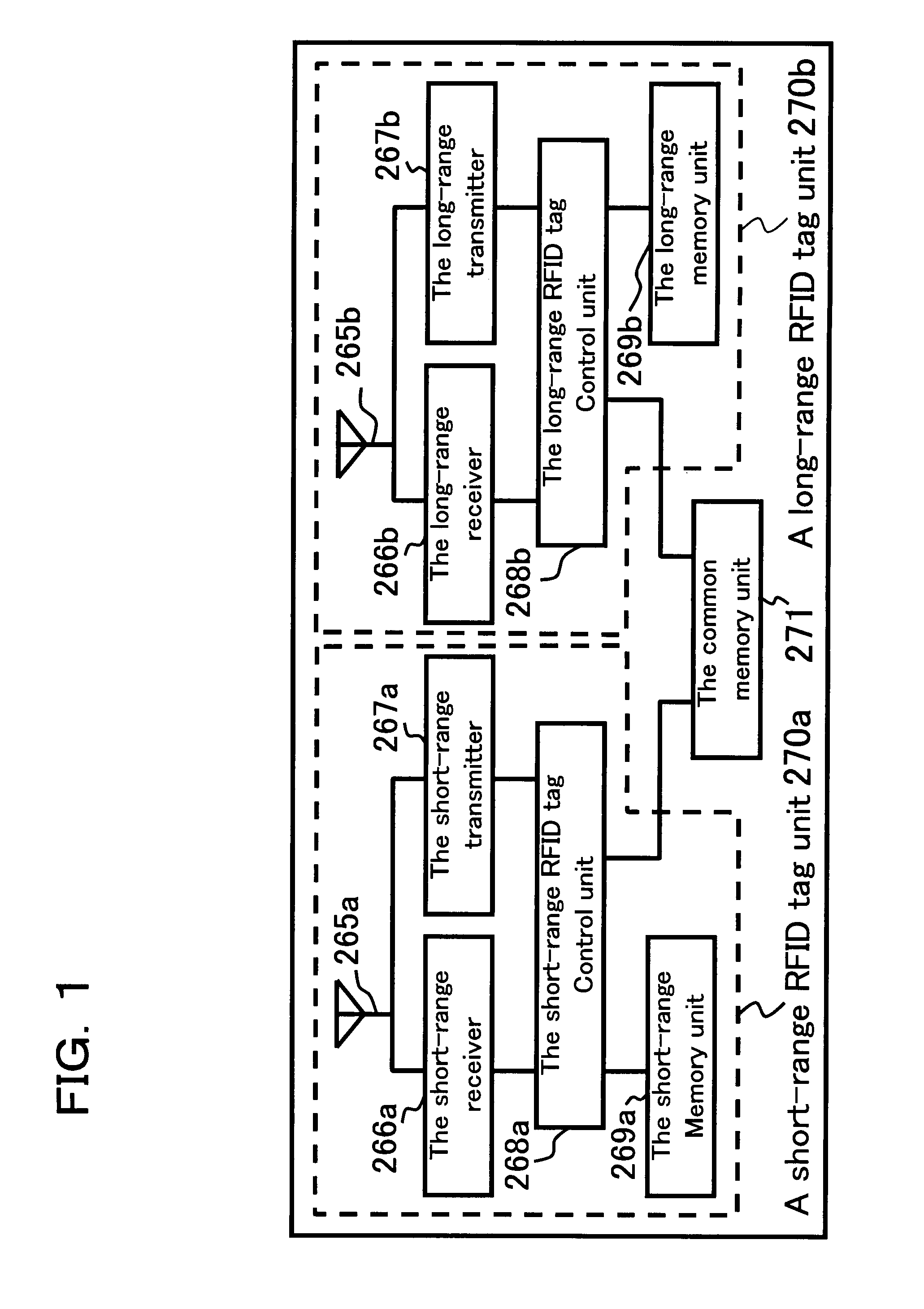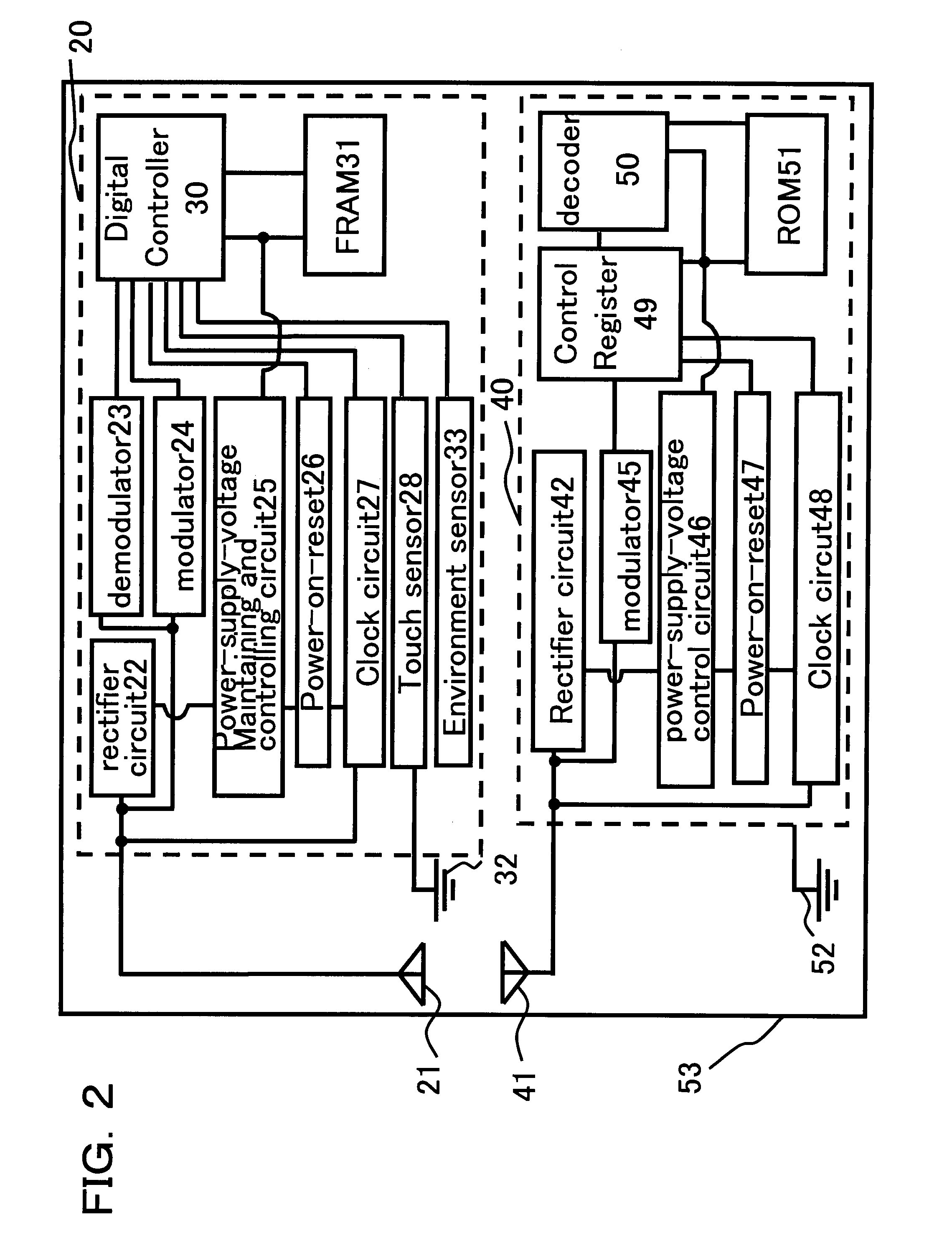RFID tag and method for obtaining information on article using the same
a technology of rfid tags and information, applied in the field of rfid tags, can solve the problems of increasing the amount of cosub>2 /sub>emissions in fabrication, high cost of rfid tags, and increasing the environmental load, so as to achieve the effect of not increasing the environmental load
- Summary
- Abstract
- Description
- Claims
- Application Information
AI Technical Summary
Benefits of technology
Problems solved by technology
Method used
Image
Examples
first embodiment
[0032]An RFID tag according to a first embodiment of the present invention is shown in FIGS. 2 to 9. The RFID tag according to the first embodiment includes an information management tag section for handling (or managing) information on an article and an identification tag section for identifying the article that are combined so that these sections can be detached from each other.
[0033]FIG. 2 is a circuit block diagram of an RFID tag 53 according to the first embodiment. The RFID tag 53 according to the first embodiment includes circuit blocks of an information management tag section 20 and an identification tag section 40, as shown in FIG. 2. In the information management tag section 20 in FIG. 2, reference numeral 21 denotes an antenna, reference numeral 30 denotes a digital controller, reference numeral 31 denotes an FRAM, reference numeral 22 denotes a rectifier circuit, reference numeral 23 denotes a demodulator, reference numeral 24 denotes a modulator, reference numeral 25 de...
second embodiment
[0114]A second embodiment shown in FIGS. 10 to 14 shows a concrete example where the RFID tag according to the first embodiment is used to manage beef. FIG. 10 is an illustration showing a flowchart of a meat management process. In the flowchart in FIG. 10, reference numeral 140 denotes a step of linking an RFID tag to a cow, reference numeral 141 denotes a step of inspecting and storing beef, reference numeral 142 denotes a step of adding customer data to an information management tag section, reference numeral 143 denotes a step of shipping beef and reclaiming an information management tag section, and reference numeral 144 denotes a check step.
[0115]Step 140 of linking an RFID tag to a cow is a step where a producer enters information on a cow in an RFID tag and a database related to the RFID tag and assigns the RFID tag to the cow.
[0116]In step 141 of inspecting and storing beef, the producer attaches the RFID tag to meat of the slaughtered cow and adds a record of inspection of...
PUM
 Login to View More
Login to View More Abstract
Description
Claims
Application Information
 Login to View More
Login to View More - R&D
- Intellectual Property
- Life Sciences
- Materials
- Tech Scout
- Unparalleled Data Quality
- Higher Quality Content
- 60% Fewer Hallucinations
Browse by: Latest US Patents, China's latest patents, Technical Efficacy Thesaurus, Application Domain, Technology Topic, Popular Technical Reports.
© 2025 PatSnap. All rights reserved.Legal|Privacy policy|Modern Slavery Act Transparency Statement|Sitemap|About US| Contact US: help@patsnap.com



